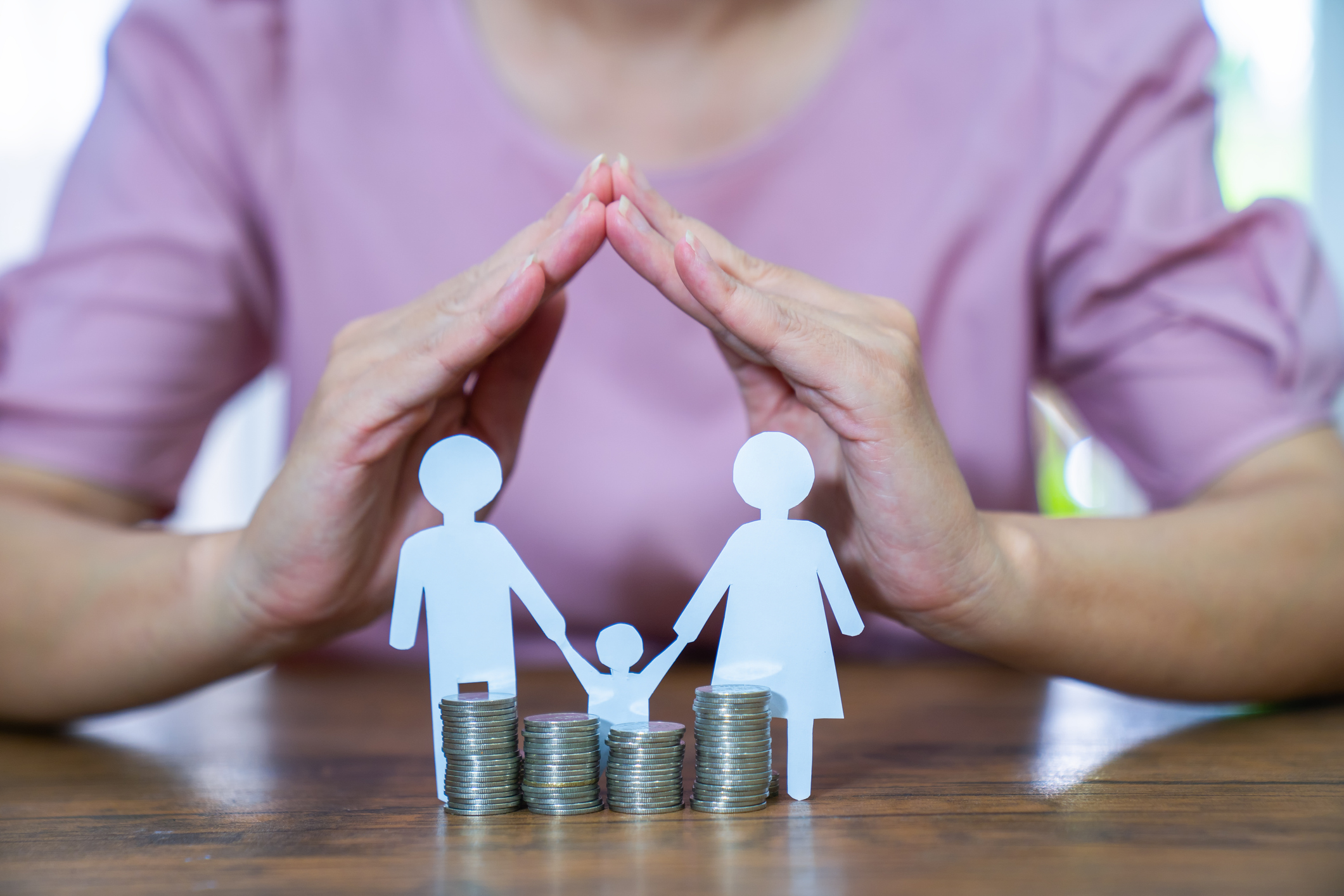Five Smart Ways to Use Your Life Insurance While You're Still Alive
Life insurance can do more than just provide for your heirs — here’s how to maximize your policy while you’re still here.

When you initially applied for life insurance, you probably intended for the coverage to serve as a safety net for your family or a legacy for your beneficiaries. Life insurance's primary purpose is to provide a monetary benefit to your heirs upon your death.
However, your life insurance policy can serve you in several ways while you're still alive. Whether you’re looking to cover unexpected expenses, supplement your income or access funds in a financial pinch, there are options to consider.
We'll discuss those options and their potential consequences. That way, you can decide if leveraging your coverage before death is a wise move for you and your loved ones.
From just $107.88 $24.99 for Kiplinger Personal Finance
Become a smarter, better informed investor. Subscribe from just $107.88 $24.99, plus get up to 4 Special Issues

Sign up for Kiplinger’s Free Newsletters
Profit and prosper with the best of expert advice on investing, taxes, retirement, personal finance and more - straight to your e-mail.
Profit and prosper with the best of expert advice - straight to your e-mail.
What is cash value in life insurance?
The first three options presented in this article involve tapping the cash value of a permanent life insurance policy (coverage that lasts for your entire lifetime as long as you keep up with premium payments). Therefore, it's helpful for you to understand what cash value is and how it works.
Permanent life insurance policies have two main components — the death benefit and the cash value account. The death benefit, or face value of your policy, is the amount of money your beneficiaries will receive when you die.
Your cash value account contains a portion of the premiums you've paid since obtaining coverage, plus interest paid by your insurer. Over time (often many years), your cash value balance can grow to a significant sum.
You can leave the money alone indefinitely. If there's cash in the account when you die, the insurance company will absorb it. The funds are not distributed to your heirs. They will only get the death benefit.
You can also choose to tap into it in various ways (discussed below) during your lifetime. Doing so could help you financially in the short term. However, your decision can also reduce your death benefit or put your policy at risk.
And if you need life insurance coverage, use this Bankrate tool to find affordable options fast:
Five ways to tap into your life insurance now
Depending on your policy type, you may be able to access funds, cover expenses or even supplement your retirement income. The following are five smart ways to leverage your life insurance now.

1. Pay your premiums
If you have enough cash value built up, you can use it to pay your premiums, freeing up money in your budget for other purposes. However, you must keep track of your cash value account balance.
If you deplete your cash value account and don't resume making your scheduled premium payments, your policy could lapse.
2. Take out a loan
You can also borrow against your life insurance and use your cash value to cover an expense you may not otherwise be able to afford. Some retirees take out a cash value loan from their policy to supplement their retirement savings or avoid cashing out other high-performing investments.
This strategy has two benefits: A cash value loan will generally have a lower interest rate than a traditional loan, and you can usually receive loan funds tax-free. However, your heirs will receive a reduced death benefit if you don't repay the debt.
3. Surrender your policy
You can surrender your policy if you no longer need or want your life insurance coverage or can't afford your premiums. Doing so will trigger a withdrawal of your cash value.
Your life insurance will be canceled, so you won’t have to make any more premium payments. However, your heirs won't get anything when you die, so you should think carefully before going this route.
4. Use your living benefit rider
The living benefit rider is an optional addendum to your permanent or term life insurance policy, which provides coverage for a specified number of years. If you become terminally ill (typically with a prognosis of a year or less), you can receive a percentage of your death benefit in advance to pay for medical care and related expenses.
You may have to pay a fee to use this rider, and the amount you receive will reduce the payout to your beneficiaries upon your death. However, exercising this option could help prevent you and your family from having to liquidate other assets to pay for your treatment.
5. Sell it
If you're a retiree who no longer needs life insurance or you're desperate for money and can't afford your premiums, you can sell your permanent or term life insurance policy. Selling your policy is sometimes referred to as a life settlement or viatical settlement.
A third party buys your coverage, takes over the premium payments and gets the death benefit when you die. You may not get as much as you expect from the transaction because:
- You won't get the full face value of your policy.
- You'll likely pay high broker fees.
- You'll have to pay taxes on the sale proceeds.
Since selling your policy means sacrificing a large percentage of your death benefit and not leaving the funds to your heirs, you should ensure this is what you need or want to do before initiating a sale.
What to do before using your life insurance while you're alive
Here are a few steps you should take before using your life insurance before death:
- Make sure that using your life insurance in advance is necessary. Have you explored alternative solutions? For instance, getting a credit card with a 0% introductory annual percentage rate (APR) could be a better way to cover an expense than borrowing from your policy's cash value.
- Review your coverage details and your insurer's rules. For instance, does your policy have a living benefit rider, and if so, how much of your death benefit can you get ahead of time? Or, what's the interest rate on cash value loans?
- Ask for guidance if necessary. If you need more information or want to explore your options, reach out to your agent, insurer, or other trusted financial professional.
What to do after using your life insurance while you're alive
Once you've used your life insurance benefits before death, there are a few things you should do, such as:
- Borrowing from or withdrawing your policy's cash value can have serious financial consequences, so be sure to make the most of the funds you get.
- Repay the loan (if possible). Dying with an unpaid life insurance loan means your heirs will get less money.
- Strengthen your finances to avoid future loans (if possible). Try to build cash reserves separate from your life insurance policy. That way, you can leave your death benefit intact.
- Keep tabs on your cash value balance. As a best practice, conservatively estimate how many months of premiums your cash value will cover and put a reminder on your calendar to resume payments before then. Remember, if you exhaust the funds, your policy could lapse.
Related content
Profit and prosper with the best of Kiplinger's advice on investing, taxes, retirement, personal finance and much more. Delivered daily. Enter your email in the box and click Sign Me Up.

Laura has been a freelance writer since 2018. Her work primarily focuses on managing your money, navigating your career, and running a successful business. Her words have been featured in Yahoo Finance, US News & World Report, and many other publications. She earned her MBA and a Bachelor's in Psychology during her previous career in human resources.
-
 Don't Wait Until January: Your Year-End Health Checklist to Kickstart 2026
Don't Wait Until January: Your Year-End Health Checklist to Kickstart 2026Skip the fleeting resolutions and start the new year with a proactive plan to optimize your longevity, cognitive health, and social vitality.
-
 Premium Rewards Cards: More Perks, Higher Fees
Premium Rewards Cards: More Perks, Higher FeesSome issuers are hiking the annual fee on their flagship luxury credit cards by hundreds of dollars. Are they still worth using?
-
 3 Trips to Escape the Winter Doldrums, Including An Epic Cruise
3 Trips to Escape the Winter Doldrums, Including An Epic CruiseThree winter vacation ideas to suit different types of travelers.
-
 Premium Rewards Cards: More Perks, Higher Fees
Premium Rewards Cards: More Perks, Higher FeesSome issuers are hiking the annual fee on their flagship luxury credit cards by hundreds of dollars. Are they still worth using?
-
 3 Trips to Escape the Winter Doldrums, Including An Epic Cruise
3 Trips to Escape the Winter Doldrums, Including An Epic CruiseThree winter vacation ideas to suit different types of travelers.
-
 4 Financially Savvy Things to Do with Unwanted Gifts
4 Financially Savvy Things to Do with Unwanted GiftsDon't send that unwanted gift to the landfill. Find a way to squeeze out some of its cash value instead.
-
 I'm an Insurance Expert: Sure, There's Always Tomorrow to Report Your Claim, But Procrastination Could Cost You
I'm an Insurance Expert: Sure, There's Always Tomorrow to Report Your Claim, But Procrastination Could Cost YouThe longer you wait to file an insurance claim, the bigger the problem could get — and the more leverage you're giving your insurer to deny it.
-
 How to Leave Different Amounts to Adult Children Without Causing a Rift
How to Leave Different Amounts to Adult Children Without Causing a RiftHere’s how to leave different amounts to adult children without causing a family rift.
-
 Introducing Your CD's Edgier Cousin: The Market-Linked CD
Introducing Your CD's Edgier Cousin: The Market-Linked CDTraditional CDs are a safe option for savers, but they don't always beat inflation. Should you try their counterparts, market-linked CDs, for better returns?
-
 How to Protect Yourself and Others From a Troubled Adult Child: A Lesson from Real Life
How to Protect Yourself and Others From a Troubled Adult Child: A Lesson from Real LifeThis case of a violent adult son whose parents are in denial is an example of the extreme risks some parents face if they neglect essential safety precautions.
-
 Here's How Much You Can Earn with a $100,000 Jumbo CD
Here's How Much You Can Earn with a $100,000 Jumbo CDYou might be surprised at how fast a jumbo CD helps you reach your goals.